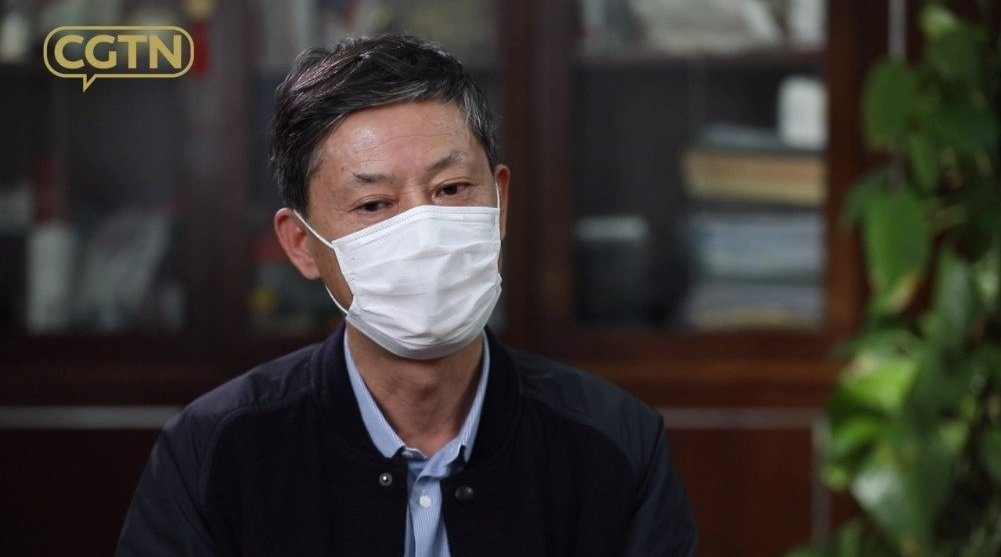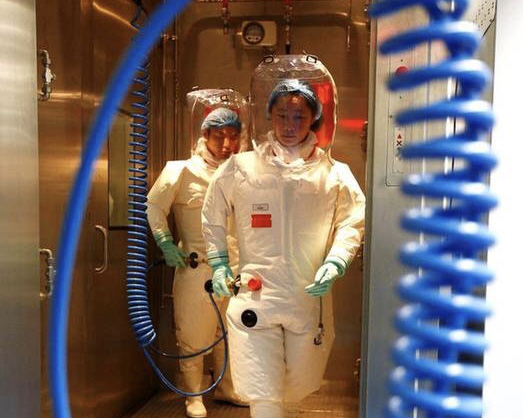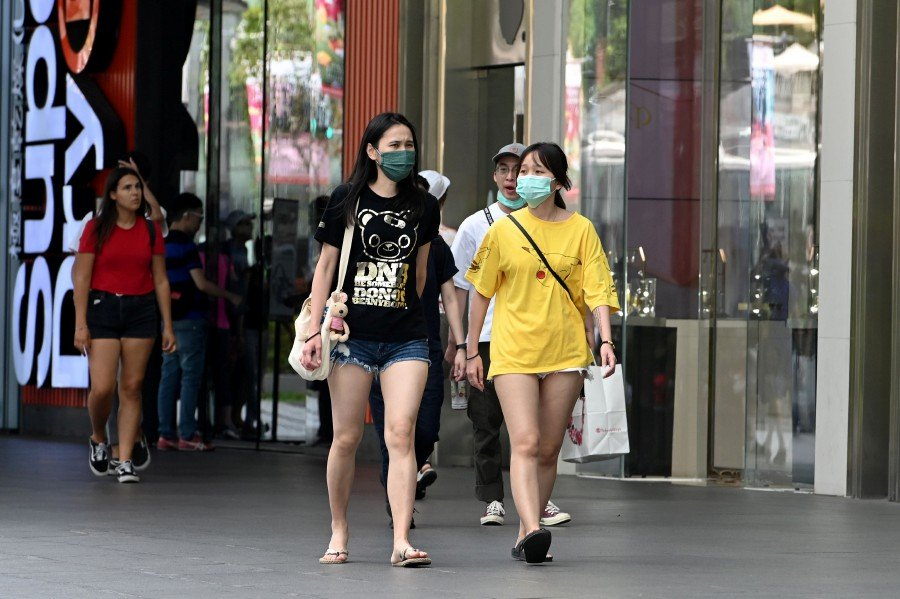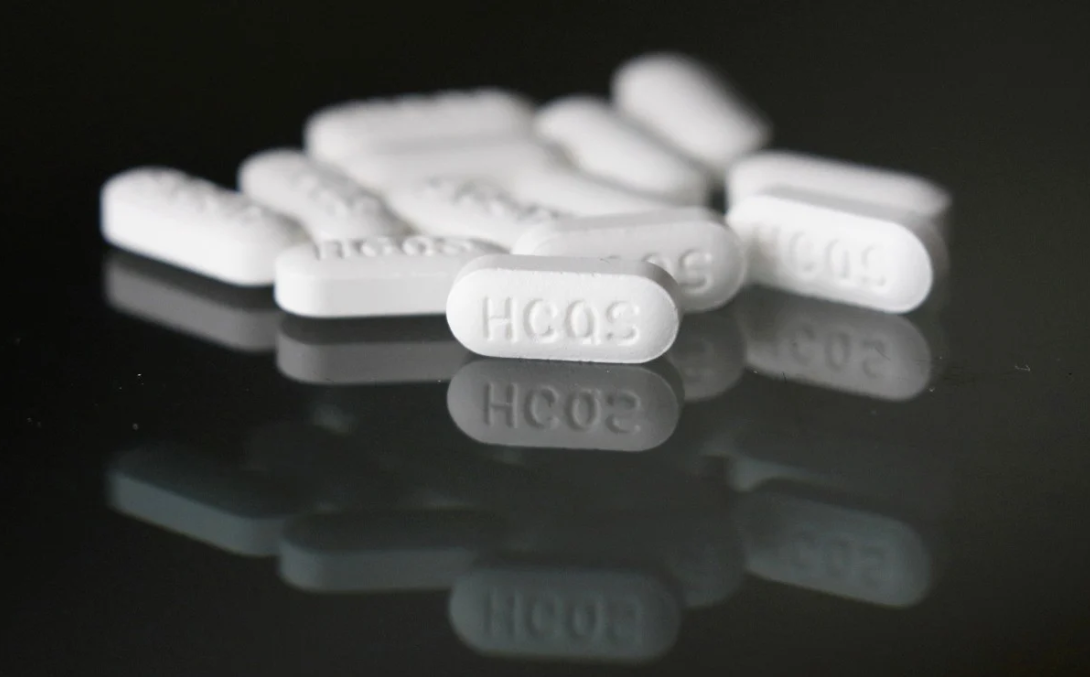Editor's note: This is the 52nd article in the COVID-19 Global Roundup series. Here is the previous one.
In the face of this previously unknown virus, millions of people have been turning to social media platforms in an attempt to stay informed about the latest developments of the COVID-19 pandemic. However, rampant misinformation is misleading the public and in some cases, fatal.
Below are some debunked conspiracy theories, rumors and fake news regarding the coronavirus crisis.
COVID-19 origins
06:18

* Was the virus made in China as a bioweapon?
There have been repeated claims that the new coronavirus was created by China, with U.S. President Donald Trump suggesting it came from a laboratory. However, scientific evidence proves that the virus naturally evolved and originated in wildlife.
On February 19, The Lancet published a letter signed by 27 scientists condemning conspiracy theories peddling that COVID-19 does not have a natural origin. The scientists said that "this coronavirus originated in wildlife, as have so many other emerging pathogens."
Also in February, epidemiologist Trevor Bedford told the Financial Times that "There is no evidence whatsoever of genetic engineering that we can find," and that "the evidence we have is that the mutations in the virus are completely consistent with natural evolution."
Bedford further explained: "The most likely scenario, based on genetic analysis, was that the virus was transmitted by a bat to another mammal between 20 to 70 years ago. This intermediary animal, not yet identified, passed it on to its first human host in the city of Wuhan in late November or early December 2019."
On March 1, a team of American, British, and Australian researchers published a paper in the scientific journal Nature, concluding that "We do not believe that any type of laboratory-based scenario is plausible ... Our analyses clearly show that SARS-CoV-2 is not a laboratory construct or a purposefully manipulated virus."

Wuhan Institute of Virology. /AFP
Wuhan Institute of Virology. /AFP
* Did the Wuhan Institute of Virology leak the virus?
An accidental release would have required a remarkable series of coincidences and deviations from well-established experimental protocols. Many scientists have said there was no evidence to conclude that the virus came out of the Wuhan Institute of Virology and many believe the virus likely made its way to people directly through bats or an intermediate host.
NPR interviewed 10 leading scientists familiar with lab accidents and concluded that there is virtually no chance that the new coronavirus was released as a result of a laboratory accident in China or anywhere else.
The researchers said that scientists would have to find the pathogen in nature first for them to get infected. However, though bats likely carry other coronavirus strains, most of them probably can't infect humans.
Even if researchers stumbled across the virus, they would be very unlikely to get infected because they wear protective gear when they collect samples. And these samples of bat blood, urine, saliva and feces are immediately plunged into nitrogen to freeze them on the spot.
Lowering the odds further, when researchers begin to work in the lab, the samples will be firstly deactivated, a process that breaks the virus apart to limit the possibility of accidents while preserving its genetic material for study. The process is actually not infectious. And the staff at the Wuhan Institute of Virology have been trained by U.S. scientists as part of the PREDICT, a global project to watch for emerging viruses, and they restrictively followed these protocols.
Jonna Mazet, a professor of epidemiology at the University of California, Davis and director of the PREDICT told NPR that researchers at the Wuhan institute were so good that "they were not only completing all of those trainings, but they were also weighing in and helping us to make those trainings very strong from a safety perspective."

Inside the Wuhan Institute of Virology. /Wuhan Institute of Virology
Inside the Wuhan Institute of Virology. /Wuhan Institute of Virology
COVID-19 spread
* Does 5G impact people's immune systems?
A post on Facebook has claimed that Wuhan was where 5G was first rolled out, suggesting that the technology has damaged people's immune systems and boosted the virulence of the common cold. This is totally unfounded.
5G is the next generation of wireless network technology. Like 4G, 3G and 2G before it, 5G mobile data is transmitted over radio waves, a small part of the whole electromagnetic spectrum (which includes microwaves, visible light and X-rays). These radio waves are not poisonous or toxic. They don't damage the cells, as X-rays, gamma rays and UV rays are able to do.
* Can warm weather slow the virus?
Will warm weather and high humidity stop the coronavirus pandemic as some public officials have claimed? Research results are not on the same page.
Evidence in favor of the virus slowing in warm weather comes, in part, from observing seasonal patterns of viruses like influenza that build in intensity during the fall and winter and wane in the spring. Even a few other coronavirus strains follow this pattern.
However, a report from the National Academies of Science, Engineering, and Medicine (NAS) of the U.S. suggests that warm weather will not stop the virus from spreading. In fact, this coronavirus will likely still "spread exponentially at higher temperatures and humidity."
"Given that countries currently in 'summer' climates, such as Australia and Iran, are experiencing rapid virus spread, a decrease in cases with increases in humidity and temperature elsewhere should not be assumed."

Singapore, a typically tropical country has more than 17,500 COVID-19 cases. /AFP
Singapore, a typically tropical country has more than 17,500 COVID-19 cases. /AFP
* Is the coronavirus just like the flu?
Experts stressed that the novel coronavirus is not the same as seasonal flu, though they may cause similar symptoms, like fever, cough, body aches, fatigue and sometimes vomiting and diarrhea.
Death rate: COVID-19, the illness caused by the new coronavirus, proves deadly in around 3.5 percent of confirmed cases. The rate is significantly higher than that of seasonal flu, which typically kills 0.1 percent of patients.
Contagiousness: Disease experts estimate that each COVID-19 sufferer infects between two to three others. The reproduction rate is twice as high as seasonal flu, when one patient typically infects 1.3 new people.
Treatment: Humans have lived with influenza for more than 100 years and there are mature vaccine and treatment for the disease, while there is no vaccine and treatment for the COVID-19.
* Can mosquitoes transmit the virus?
The World Health Organization (WHO) has definitively stated that the coronavirus cannot be transmitted via mosquitoes, while the U.S. Centers for Disease Control and Prevention said it "has no data to suggest" that the coronavirus is spread by mosquitoes or ticks.
The coronavirus is mostly spread via droplets produced when we sneeze or cough, and by touching contaminated surfaces. Although the new coronavirus has been found in blood samples from infected people, there's no evidence it can spread via mosquitoes.
Even if a mosquito did pick up a high enough dose of the virus in a blood meal, there is no evidence the virus would be able to infect the mosquito itself. And if the mosquito isn't infected, it won't be able to transmit it to the next person she bites.

U.S. President Donald Trump's championing of the drug has led to an enormous focus on hydroxychloroquine as a potential COVID-19 treatment. /AP
U.S. President Donald Trump's championing of the drug has led to an enormous focus on hydroxychloroquine as a potential COVID-19 treatment. /AP
Treatment of the COVID-19
* Are Hydroxychloroquine and Azithromycin effective cures?
In March, Trump promoted the use of hydroxychloroquine, a common anti-malaria drug, to treat COVID-19, saying "there are some very strong, powerful signs" of its potential as a therapy. He also claimed the use of the drug in combination with Azithromycin, an antibiotic, could be "one of the biggest game-changers in the history of medicine."
Hydroxychloroquine, also known by its brand name, Plaquenil, is readily available to Americans as an off-the-shelf drug with various low-cost generic versions. Like many drugs, hydroxychloroquine comes with a number of potential side effects, including headaches, dizziness, stomach pain, weight loss and mood changes.
Despite the emergency use order, the FDA has not conducted clinical trials to fully ascertain whether the drug is an effective treatment for COVID-19.
A recent analysis of 368 patients examined the possible effects of the treatment, but concluded there was "no evidence" of decreased risk of mortality or mechanical ventilation in comparison with supportive care.
A panel made up of 50 doctors, pharmacy experts and government researchers and officials, convened by the U.S. National Institutes of Health, specifically recommended against the use of the anti-malaria drug hydroxychloroquine in combination with the antibiotic Azithromycin.
* Can drinking alcohol kill the virus?
The WHO has warned that drinking alcohol will not protect against COVID-19, debunking viral fake news.
In March, Iran's news agency Irna reported that at least 44 people were killed by alcohol poisoning. They drank bootleg alcohol and got poisoned because they believed that alcohol could prevent them from contracting COVID-19.
"Consuming alcohol will not destroy the virus, and its consumption is likely to increase the health risks if a person becomes infected with the virus. Alcohol (at a concentration of at least 60% by volume) works as a disinfectant on your skin, but it has no such effect within your system when ingested," the WHO stated in a fact sheet.